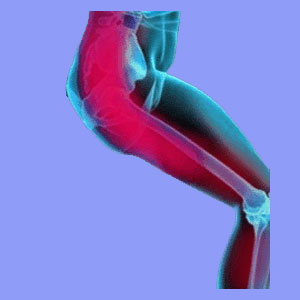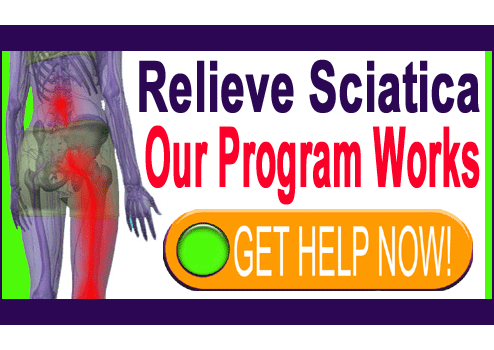
Magnetic therapy for sciatica is a home-based remedy that offers an alternative approach to symptomatic relief. Magnets are currently used for many health-related applications and are prominently featured in the pain management community. Many patients swear that they receive benefits from the use of magnetic products, but the question of true scientific efficacy remains.
Magnetic therapy has been used for treating various health conditions for literally thousands of years. Despite this fact, there is a distinct lack of scientific proof that demonstrates any actual rewards of the treatment. However, with an ever-growing interest in alternative medical practices, the current medical marketplace is filled with magnetic devices that claim to bestow “definitive and evidence-based” pain relief.
This consumer guide helps patients to better understand the possible benefits and risks of using medical magnets to treat sciatica at home. We approach this controversial topic with open minds and provide objective views of our findings without commercial incentives to taint our recommendations. This guide serves as reader-requested topical expansion of our previous essay on the use of magnets for sciatica.
Magnetic Therapy for Sciatica Theory
Magnets for pain relief generally claim to attract charged particles in the blood, helping to increase circulation to painful regions of the anatomy. There is some credibility to this idea, although the depth of magnetic penetration into anatomical tissue is a subject of great debate, particularly for small home-use consumer-grade magnets. Most experts say that these devices would be lucky to provide any effect even in the tiny blood vessels immediately below the skin, but would surely do nothing to affect deeper tissues.
Some magnetic therapy advocates describe microscopic changes in the actual composition of cells in response to magnet exposure. They go further to detail the positive benefits of these changes and how pain relief can be provided safely and effectively for virtually any cause of suffering.
We have spoken to some Eastern medical practitioners who say that magnets can also influence the chi/qi energy fields of the body. This is a principle of acupuncture and acupressure, which are both greatly misunderstood healing arts by modern western medicine. However, none of the experts we interviewed would commit that the low strength of medical magnets used for home applications would have much benefit for any particular health issue.
Sciatica Magnetic Treatment Evaluation
We see that sales of medical magnets have risen year over year for more than 2 decades already. Magnetic bracelets, drink containers, belts, shoe inserts and other devices are all marketed to desperate consumers who will stop at nothing and leave no stone unturned in their quest for pain relief. We like the fact that magnets offer non-pharmaceutical form of pain management and that most devices are very affordable. However, that is about the extent of the positive benefits we see when it comes to true efficacy from home-based magnetic therapy for sciatica treatment.
While increased circulation and improved healing response are great for some sources of pain, it seems completely off-base for most true sciatica and pseudosciatica syndromes. In these scenarios, there is rarely anything that needs healing per se, nor will increased circulation provide any benefits for nerve compression that is the fundamental source process of virtually all structurally-based sciatica diagnoses. Attracting more blood to the area will do nothing to relieve a compressive neuropathy, stop piriformis spasming or undo degeneration of the sacroiliac joint. Similarly, improved circulation will not prevent pain from diabetic sciatica or an assortment of neuromuscular diseases.
In regard to cellular alteration due to exposure to magnets, we have studied the medical literature and conducted our own research on this topic. We find no validity in this theory at all. In fact, the only proof we see of any verifiable cellular changes is caused by very powerful magnetic fields and is deadly. Exposure to the most powerful magnets is a known contributor to certain diseases, such as cancer, organ failure and even death. None of these seem like changes that anyone would want to actively encourage in their cells.
Magnetic Therapy for Psychogenic Sciatica
The best use of magnets we can definitively see in the sciatica therapy sector is their application in cases of psychogenic symptomatic conditions. In these circumstances, the underlying mechanism which is actually creating pain is oxygen deprivation due to direct reduction in blood flow. This process is known as ischemia. Unfortunately, this form is ischemia is not anatomically-motivated due to any vascular problem or tissue compression, but is instead purposefully enacted by the mind as a defense mechanism against mostly subconscious and unconscious stresses. We detail the psychosomatic process in our expert coverage of mindbody sciatica.
If the patient can find a magnet that is powerful enough to actually penetrate deeply enough into the symptomatic region without doing any harm, the possible benefits of increased circulation should include a reduction in pain. However, the mind can still find methods of limiting blood supply to the region, despite magnetic interference. In the best case scenario, relief might be minor to moderate and temporary. In the worst case scenario, no relief will be provided at all. At least no harm will be done given the use of magnets which are ruled to be safe for health applications.
We now know that a substantial percentage of back and leg pain syndromes are directly caused by the mindbody interactions or suffer negative collateral effects of these interactions even in structurally-induced versions of sciatica. Despite the possibility of providing some degree of benefit for a great number of patients, we still do not like the idea of magnets for use in psychogenic pain syndromes, simply because they are symptom-based care and do nothing to undermine the causative process creating the pain. We would rather see patients invest time and effort in a knowledge therapy program than simply investing money into a home-use magnet product.
For patients who are affected by purely anatomically-enacted sciatica and pseudo-sciatica, it seems that the most to be hoped for from magnetic application is benefit via placebo effect. While not dangerous, the patient would be better served using some form of treatment that acts on the underlying causative process instead of hoping to fool their mind into temporarily enjoying minor relief that will likely end just as quickly as it began.
In summary, we can not endorse magnets as a useful tool for sciatica care, but we can not find enough reasons against them to discourage patients from trying magnetic therapy either. Even if they work by placebo alone, we are somewhat happy, since these devices might spare a few patients poisoning due to hazardous drugs or true disability from unnecessary surgery. Just don’t hope for too much and you will not be too disappointed.





